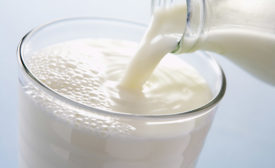Home » Keywords: » full-fat foods
Items Tagged with 'full-fat foods'
ARTICLES
Full-fat and grass-fed dairy products are featured in the diet.
Read More
Full-fat dairy is a healthy choice
Cheese, butter and full-fat dairy make a resurgence as part of ‘keto’ diet
February 7, 2019
Millennials redefine ‘healthy’
Millennials are concerned with the health of animals, people and the environment.
April 4, 2017
Is there flexibility in fat levels of milk when it comes to health?
Growing evidence supports the association between full-fat dairy foods and neutral to positive health outcomes.
March 9, 2017
Make the most of milkfat ingredients
Consumers’ perception of full-fat dairy products is changing as research gives a new appreciation for milkfat ingredients.
January 6, 2017
Balancing health and indulgence in frozen desserts
Some consumers choose full-fat foods with a clean label over healthier lower-fat versions made with ‘chemical-sounding’ ingredients.
December 6, 2016
Get our new eMagazine delivered to your inbox every month.
Stay in the know on the latest dairy industry trends.
SUBSCRIBE TODAYCopyright ©2024. All Rights Reserved BNP Media.
Design, CMS, Hosting & Web Development :: ePublishing






